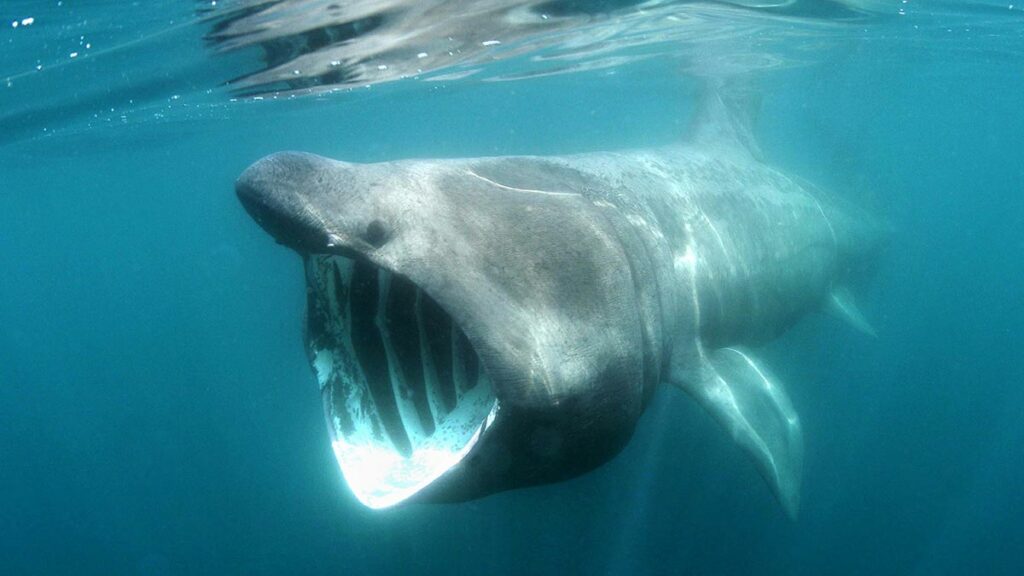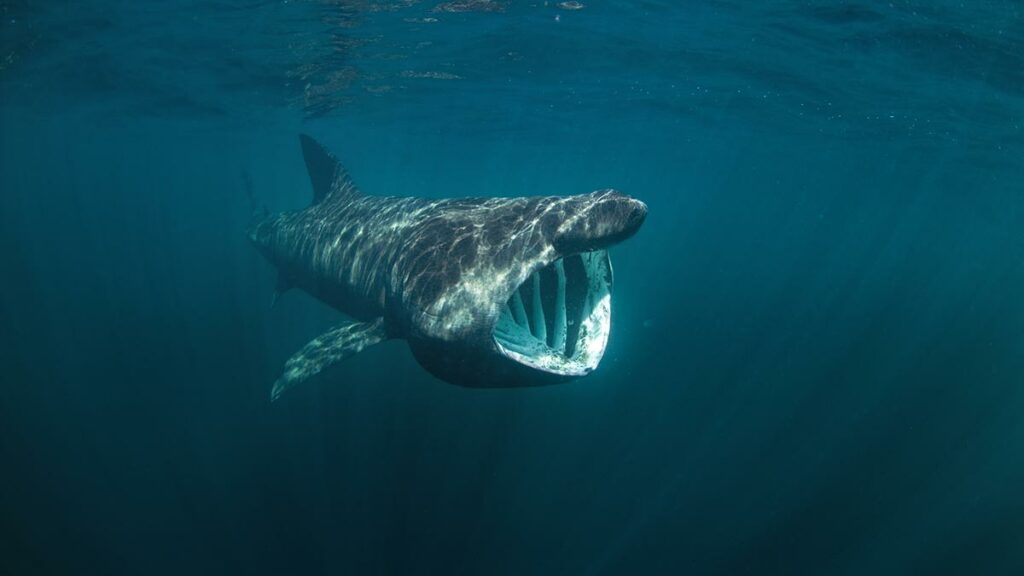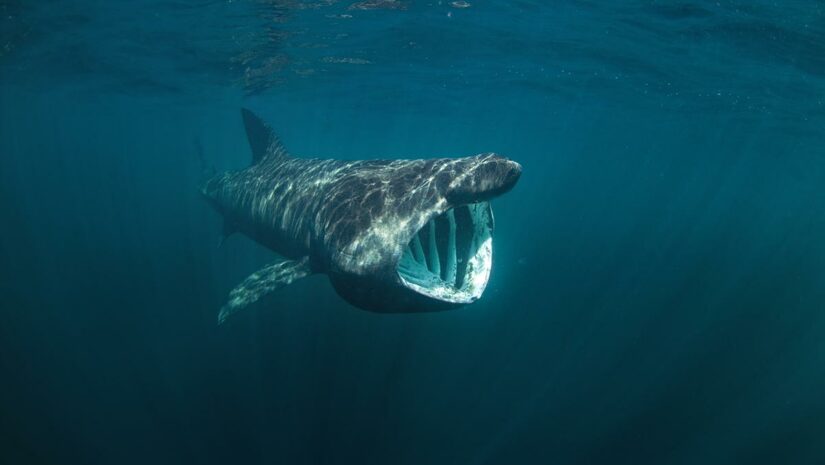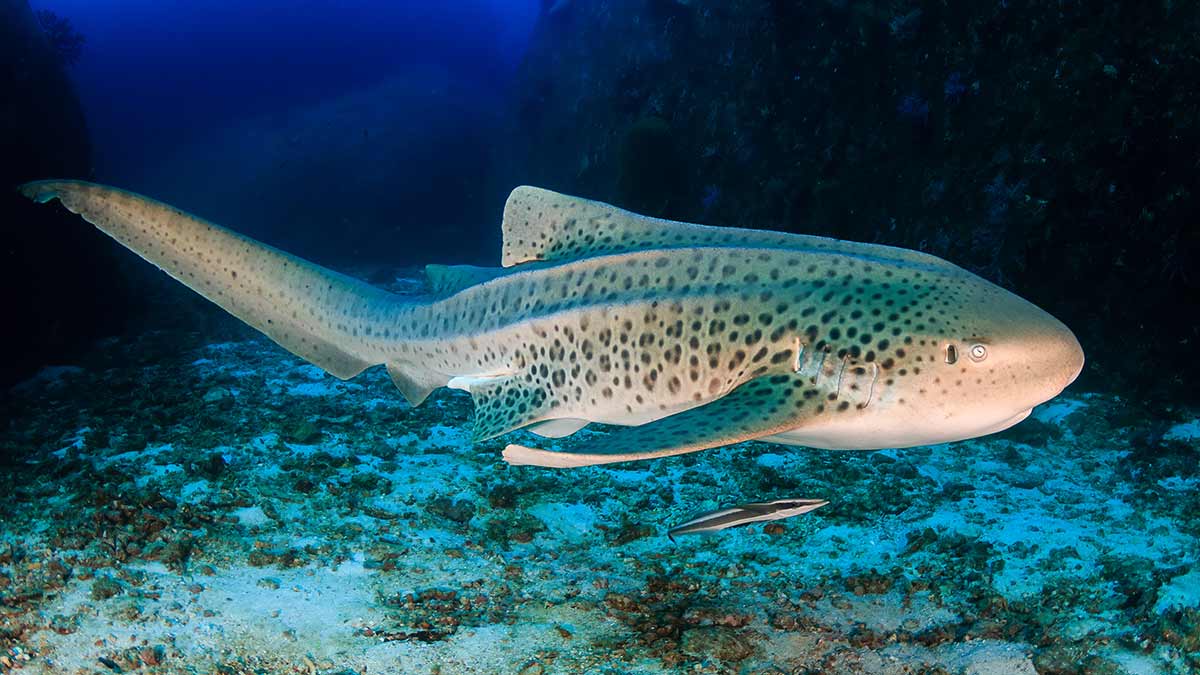There are many gentle giants in the sea, creatures that, despite their intimidating size, pose little or no threat to humans. Sharks have an exaggerated reputations as bloodthirsty killers. Therefore, it may surprise you to learn that several species of sharks are rather docile, and either afraid of or curious about humans in their territory. One such species that falls into the latter category is the basking shark.

What is the basking shark?
The basking shark, Cetorhinus maximus, is the second largest shark species in the world; the largest recorded specimen was over 40 feet long. It can reach lengths of up to 10 meters or more. Despite its enormous size, the basking shark is a harmless filter feeder, surviving solely on tiny plankton and small fish. Its most striking feature is its enormous, gaping mouth, which can be up to one meter wide. Basking sharks are often seen slowly swimming near the water’s surface, basking in the warm sunlight, earning them their name. Their presence is a captivating sight, evoking a sense of awe and appreciation for the wonders of the underwater world.
Characteristics
Basking sharks have mottled skin patterns in shades of black, blue, brown, and gray, with a lighter underside. Like other sharks species, their skin is very abrasive, with hooked denticles pointing in all directions. They have long, conical snouts, and the tail fins are a pronounced crescent shape that often sticks out of the water.
Habitat
The basking shark is frequently found in Arctic and temperate waters around the world, both nearshore and offshore, and in brackish estuaries. Individuals migrate throughout this considerable range in search of food. Recent tag data has shown that some of the sharks head to tropical waters in winter, after the plankton dies off in temperate zones. These are social creatures, often seen in small groups or large schools of a hundred sharks or more.
Behavior
In addition to their impressive size, the behavior of basking sharks is fascinating. They are often observed swimming with their mouths wide open, filtering huge volumes of water to capture their microscopic prey. Despite their massive presence, they are known for their docile and non-aggressive nature towards humans. Basking sharks are solitary creatures, but they occasionally gather in small groups during feeding events. These gentle giants have been known to breach, leaping partially out of the water, which is a rare and awe-inspiring sight. Their behavior exemplifies their peaceful existence, making them a beloved and revered species in the marine world.

Diet
Posing little danger to humans, it primarily consumes plankton and small fish, opening its giant mouth and skimming slowly across the surface of the water. Their mouths are filled with tiny teeth and mucus-covered projections that snag plankton as water flows past the gills. Their five gills almost completely encircle the head and are a distinguishing feature.
Life span
The lifespan of a basking shark is estimated to be about 50 years. They grow slowly, possibly taking as long as 16 years to reach reproductive maturity. After breeding, their gestation period is up to 3.5 years. This slow growth and long gestation period have made populations slow to rebuild after devastation.
Predators
Humans are the main predators of basking sharks, fished for their meat and fins, and for the oil in their enormous livers. Fishing is now prohibited in most of the countries in their range. The International Union for Conservation of Nature (IUCN) lists them as vulnerable. Because they feed close to the surface and are tolerant, even curious of boats, they are a popular focus of both diving and ecotourism expeditions.
What to do if you see a basking shark
If you are lucky enough to spot a basking shark in the wild, there are a few things to keep in mind. Firstly, maintain a respectful distance to avoid disturbing or startling the animal. Admire it from afar and resist the urge to touch or approach it closely. If you’re in a boat, slow down and navigate around the shark, giving it plenty of space. Take the opportunity to observe and appreciate its graceful movements and unique characteristics. If you’re a diver, avoid interfering with the shark’s natural behavior and keep a safe distance. Remember, basking sharks are protected species, so it’s crucial to prioritize their well-being and conservation.




